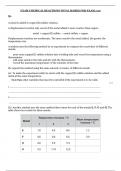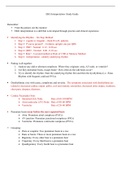Prüfung
EXAM CHEMICAL REACTIONS
- Kurs
- Hochschule
This exam covers the topics of reactions of metals, decomposition, energy changes with calculations, reactions of metal oxides, calculating mass and percentage composition and properties of chemicals. The exam has one hundred and fifty marks allocated to it spread over fourteen questions. The ques...
[ Mehr anzeigen ]







